Learning to Fight Against the Pattern, and Not Your Partner
When relationships become difficult, counseling could help. However, do counselors have the superpower to fix relationship problems? Not really. When I first start to work with a client, I have little idea of what is going on in their relationships. At the start of therapy, I barely know my client, not to mention their absent partner. Nevertheless, my clients almost always learn something new about their relationship, even after just one therapy session.
Why is that? My sense is that the secret is refocusing. When trying to understand struggles in relationships, people tend to focus on the other partner rather than the relationship. As a result, one might become increasingly familiar with everything their partner has done/said wrong, yet still does not have a clear picture of the relationship itself.
Why Is It Important to Look at the Relationship Instead of the Other Person?
Because we all carry assumptions, unrealistic expectations, and even baggage from previous relationships. Merely focusing on what our partner has done/said wrong, will result in missing the chance to examine what really gets in the way.
Understanding Your Attachment Style
Effective couples work focuses on problematic patterns, while ineffective ones focus on problematic partners.
Adult attachment theory is a powerful tool to help couples gain clarity in their relationship patterns. The theory describes three basic types of attachment styles – secure, anxious, and avoidant. Each attachment style comes with a set of assumptions and behaviors.
Secure attachment comes with a sense of security and intimacy with the partner. As a result, the person is unlikely to get into a “flight-or-fight” mode when discussing conflicts. They are open, empathetic, and able to express feelings and needs without accusation. In contrast, the anxious type quickly gets into the “fight” mode, and the avoidant type tends to fall into the “flight” mode.
Here is a questionnaire that helps you identify your attachment style.
Learning to Address and Focus on the Pattern
Understanding your and your partner’s attachment styles gives you an idea of what was happening beneath your relationship conflicts. Effective couples work reveals core attachment fears, which feed into problematic patterns. To examine patterns, an analogy often used in Emotionally Focused Therapy (EFT) is “protest dance”. The fear of abandonment, the fear of being a failure, and the fear of not mattering to our partner are so unbearable that partners get into a “protest dance” to protect themselves.
The difference in attachment styles is the root of the most commonly experienced pattern–the “pursuer-withdrawer” cycle. The anxious one (the pursuer) keeps pursuing the avoidant one (the withdrawer), who would keep withdrawing under their partner’s pressure. For the anxious partner, silence signals the danger of abandonment; for the avoidant partner, being chased evidences their failure to satisfy their partner. From there, the dance of fear goes on and on.
Learning How to Work as a Team
Couples caught in the “protest dance” may be able to examine the patterns. However, getting unstuck from the pattern requires teamwork. Are you willing to take the risk to share your most vulnerable feelings – your deep fears – to your partner to help them respond to you differently (unstuck)? If there is a slight chance that you are viewed as the problem of the relationship, the answer is an absolute NO.
On the contrary, couples focusing on problematic patterns share a common goal and strive for an alliance. Strengthening the alliance helps create safety and trust.
They soothe our brain and open it to strategies no longer limited to flight-or-fight. In other words, partners are more willing to try a new dance.
Fighting against your partner pushes your partner away. Fighting against the pattern pulls your partner closer. After all, this is a part of the journey to building a partnership.
Search Our Other Blogs!
Interested in Counseling for Communication Skills and Boundary Setting?
If you’re a Marylander who knows that counseling is the direction you need to take, the therapists at LifeSpring Counseling Services are here to help. We offer online counseling services for mindfulness, depression, anxiety, trauma, and grief and loss. We also offer Brainspotting as a specialized service, and Brainspotting can be done online, too!
Here’s how you can get started! Online counseling for communication skills & boundary setting isn’t the only service offered at our Maryland office
The counselors and social workers at our Maryland office also offer counseling services for trauma, grief and loss, boundary setting, communication skills, and difficult life transitions. We also offer specialized counseling services including Brainspotting and spiritually-integrated counseling. Because we are located next to several local universities, we also work with college students and international students.
Written by: Si Meng, LGPC
Si is a licensed therapist at LifeSpring Counseling Services in Maryland who specializes in trauma, depression, anxiety, life transitions, and mood disorders. She offers multicultural and bilingual services in both English and Mandarin.
Photo Credit: Terrillo Walls, Antoni Shkraba, Leah Kelley, & Mikhail Nilov
Date of download: 9/8/2022



